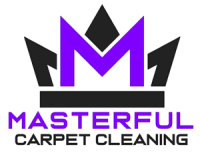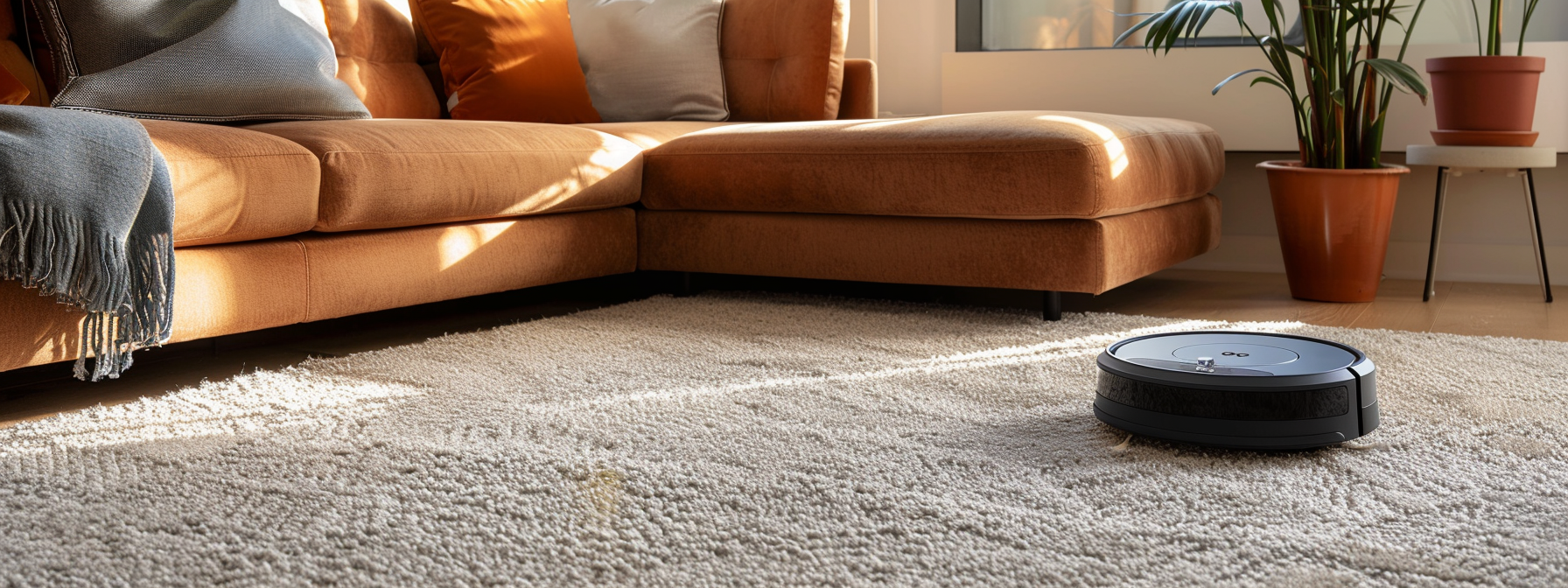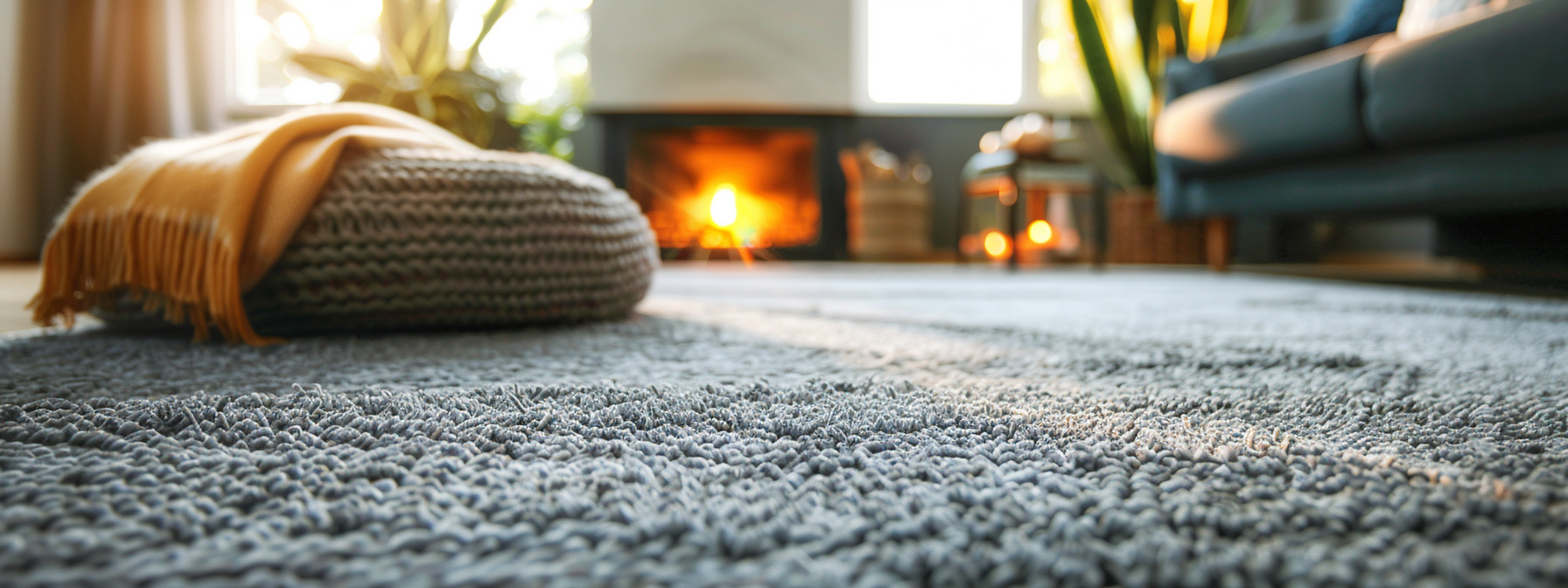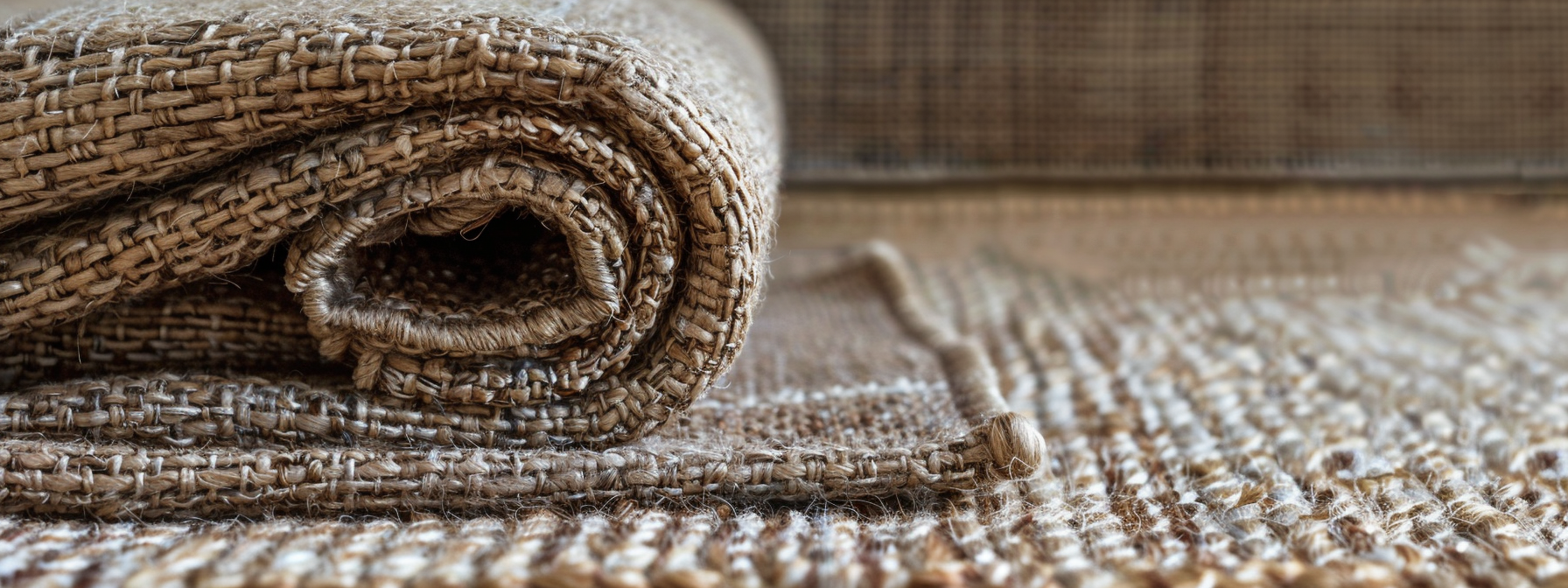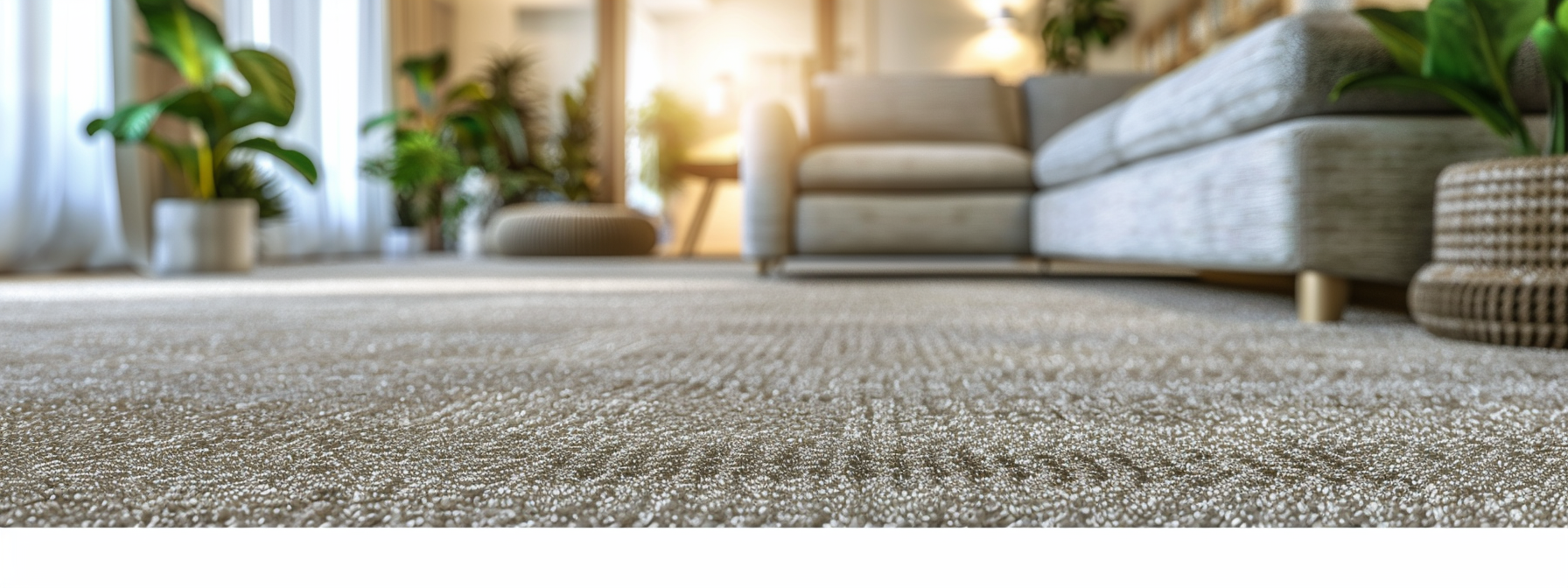Immediate Actions to Take When Your Carpet Gets Burned
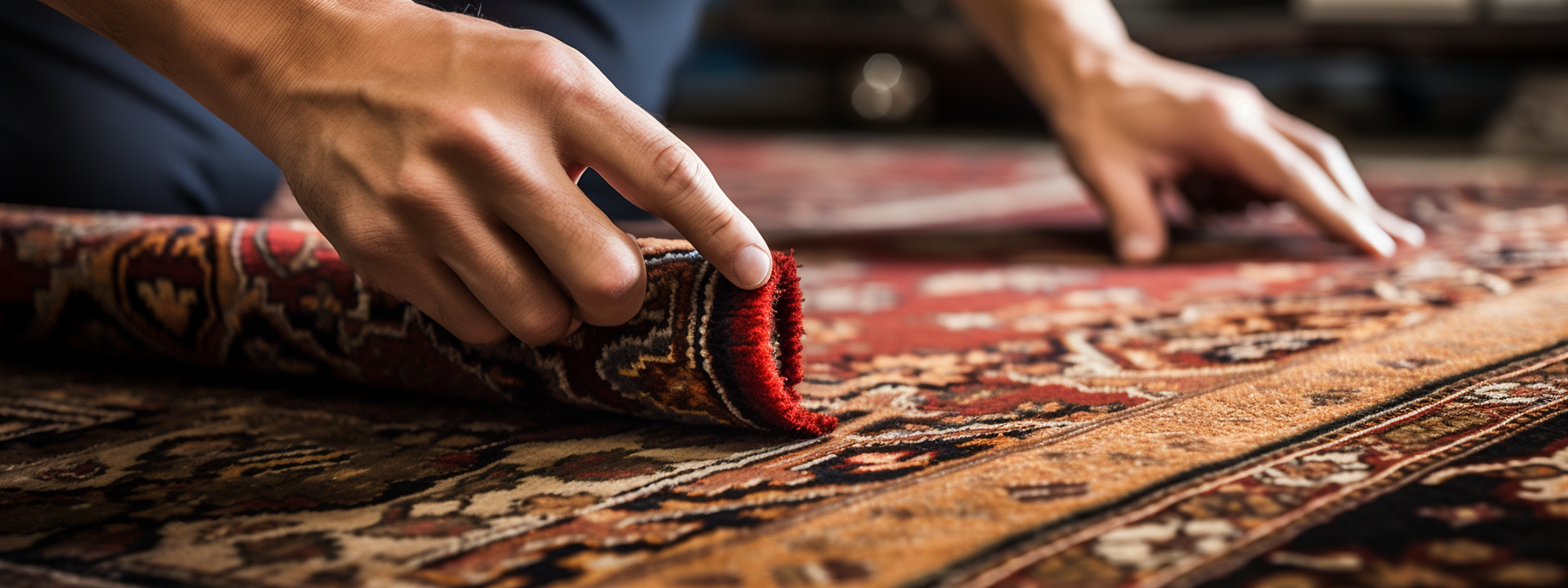
Accidents can happen in any home, and sometimes they result in unsightly burns on your carpet.
Whether it’s from a dropped cigarette, a hot iron, or an ember from a fireplace, the immediate actions you take can significantly impact the ability to repair and restore your carpet. Here’s what you need to do right after you notice a burn on your carpet:
Assess the Damage Quickly
The first step is to assess the extent of the damage. Look at the size and depth of the burn. This initial assessment will guide your next steps – whether it’s a DIY fix or you need professional help.
Clean the Area
Before any repair, ensure the area is clean. Vacuum around the burned spot to remove any loose fibers or debris. This step is important for a clear view of the damage and to prepare the area for further repair steps.
Immediate Stain Removal
If there’s a visible mark, gently blot the area with a cleaning solution. A mix of one-part hydrogen peroxide to ten parts water is often effective. Remember, always blot; don’t rub as rubbing can worsen the damage.
Minor Burn? Snip Away Charred Fibers
For small burns, carefully snip away the burnt fibers with scissors. Be cautious not to cut too deep or remove unburnt fibers. This step can sometimes be enough to minimize the appearance of minor burns.
Blot Dry and Check
After cleaning, blot the area dry and check if the burn mark is still visible. For minor burns, this might be enough. If the mark persists or if it’s a larger burn, you’ll need to consider more extensive repair methods.
Prepare for Next Steps
If the burn is more than just superficial, you’ll need to prepare for more in-depth repair like patching or professional assistance. Gather your tools and materials if you’re attempting a DIY repair, or start researching for a reliable carpet repair service.
Quick Tips
- Act fast: The quicker you respond to the burn, the better your chances of minimizing damage.
- Avoid DIY repairs on expensive or antique carpets; professional help is advisable in such cases.
- Ensure good ventilation if using any chemical-based cleaning solutions.
By following these immediate actions, you can take control of the situation and mitigate the damage to your carpet. Remember, the first few moments after the accident are important in preserving the look and lifespan of your carpet.:

Detailed Repair Steps for Burned Carpet
After assessing the damage and preparing your workspace, follow these detailed steps to repair your burned carpet:
1. Cutting Out the Burned Area
Begin by carefully cutting out the burned area of the carpet. Use scissors or a utility knife, ensuring you only remove the damaged fibers and maintain a clean, even edge for easier patching. This step is helpful for both minor and more significant burns.
2. Preparing the Replacement Patch
Prepare a replacement patch using carpet remnants or a patch kit. For remnants, use the removed piece as a template and cut a slightly larger piece. For patch kits, follow the manufacturer’s instructions. Ensure the patch matches the color and texture of your existing carpet.
3. Attaching the Replacement Patch
Apply carpet adhesive to the edges of the cut-out area. Carefully position the replacement patch, pressing down firmly to secure it. Ensure the patch aligns properly with the existing carpet pattern and texture.
4. Securing the Patch
For added security, use carpet seam tape around the edges of the patch. This helps to keep the patch in place and prevents it from fraying or lifting.
5. Blending the Patch
To blend the patch seamlessly with the rest of the carpet, use an iron on a low-heat setting with a clean cloth over the patch. Gently iron the area in a circular motion, helping the fibers of the replacement patch to integrate with the surrounding carpet.
6. Final Cleaning and Maintenance
Once the repair is complete, clean the area thoroughly with a carpet cleaner to remove any adhesive residue or dirt. Regular vacuuming is also essential to maintain the repaired area and ensure its longevity.
Tips for Minor Burns
For small burns, like cigarette marks, you can often snip away the burnt fibers and treat the area with a cleaning solution made from hydrogen peroxide and water (1:10 ratio). Light sponging and drying may be sufficient for these minor burns.
Repairing carpet burns, whether small or large, can be a straightforward DIY task. With the right materials and some patience, you can restore your carpet’s appearance effectively.
Always assess the damage first, and proceed with the appropriate steps for either minor or significant burns. Remember, regular maintenance and careful handling of hot objects near your carpet can prevent future damage.

Preventing Future Burns and Long-Term Carpet Care
After addressing immediate and detailed repair steps for carpet burns, it’s essential to focus on preventing future damage and maintaining your carpet’s longevity. Here are some key strategies and tips:
Preventive Measures to Avoid Future Burns
- Heat Source Management: Be cautious with heat-generating items like irons, curling wands, and candles. Ensure they are never left unattended on carpeted surfaces.
- Safe Placement of Hot Items: Use heat-resistant trays or holders for candles and keep hot drinks or food items off the carpet. Ensure that electronic devices generating heat are not placed directly on the carpet.
- Awareness and Safety Practices: Educate household members about the risks of placing hot items on the carpet and establish safe practices to avoid accidental burns.
Using Mats for Carpet Protection
- Entrance and Outdoor Mats: Place mats at key entry points to trap soil, dirt, and other particles before they reach the carpet. This simple step can significantly reduce the amount of debris that comes into contact with the carpet, preserving its condition.
- Types of Mats: Opt for entrance mats in high-traffic areas and durable outdoor mats. These can be effective in trapping dirt and preventing it from being carried onto the carpet.
Foot Traffic Management
- High-Traffic Zone Identification: Regularly inspect your carpet for signs of wear, particularly in hallways, entrances, and areas around furniture.
- Use of Area Rugs and Runners: Employ area rugs in high-traffic zones to absorb foot traffic impact and protect the underlying carpet. Choose absorbent rugs, that have a rubber backing for grip, and complement your décor.
- Regular Maintenance: Vacuum high-traffic areas frequently to remove embedded dirt and perform spot cleaning as needed. Periodic deep cleaning is also helpful for removing deeply embedded dirt and grime.
Professional Carpet Maintenance
- Frequency of Professional Cleaning: For residential carpets, professional maintenance is recommended at least once a year, and more frequently for commercial or high-traffic areas.
- Benefits of Professional Cleaning: Professional services include deep cleaning, stain and odor removal, and sometimes repair work, which can significantly extend the life of your carpet.
Seasonal Carpet Care
- Winter Care: Use humidifiers to combat dry indoor air that can make carpets brittle. Vacuum regularly to remove salt and debris.
- Summer Maintenance: Utilize dehumidifiers to manage humidity levels, preventing mold and mildew. Regular vacuuming is important to remove spores and prevent issues.
- Rainy Season Tips: Employ water-absorbent mats at entrances and ensure good ventilation to reduce indoor humidity levels.
Long-Term Carpet Maintenance Checklist
- Implement a Regular Upkeep Schedule: Consistency in cleaning is key to maintaining your carpet’s appearance and durability.
- Seasonal Adjustments: Adapt your care routine to the challenges of each season to maintain your carpet’s quality.
- Consider Periodic Expert Maintenance: Expert maintenance services can extend your carpet’s lifespan and maintain its quality.
By following these preventive measures and maintenance tips, you can protect your carpet from future burns, prolong its lifespan, and maintain its quality for years to come.
Proper care and attention can keep your carpets looking great and prevent costly replacements or repairs.

Specific Care Tips for Different Carpet Types and Maximizing Longevity
Maintaining and maximizing the lifespan of your carpet requires understanding the specific needs of different carpet types. Here are tips for some common carpet types:
Frieze Carpet
- Cleaning: Due to its high twist, frieze carpet can hide dirt and stains. It requires deep cleaning every 12-18 months, especially in high-traffic areas or homes with pets.
- Stain Resistance: Nylon frieze carpets are often marketed as stain-resistant, but it’s imperative to clean spills immediately to prevent staining.
Plush/Saxony/Velour/Velvet Carpet
- Appearance: These carpets have a luxury style with short to medium pile. They are susceptible to vacuum marks and footprints.
- Vacuuming: Use a vacuum specifically designed for plush carpets to maintain appearance and avoid damage.
Shag Carpet
- Cleaning Challenges: Shag carpets are dense, making them difficult to clean with standard vacuums. Use vacuums recommended by the Carpet Research Institute for shag carpets.
- Vacuuming: Avoid vacuums with strong suction as they can stick to the carpet. It’s best to use a vacuum that can move easily over dense fibers.
Loop Pile Carpet Styles
- Vacuuming: Be careful to avoid creating fuzz when vacuuming loop pile carpets. Use a vacuum head without a brush roll, or turn off the brush roll/beater bar operation.
- Berber Carpet: Clean stains immediately as the tight weave can trap spills. Regular cleaning helps maintain appearance. Choose nylon over olefin fiber for better durability.
Cut and Loop Pile Styles
- Durability: These styles can show wear more quickly due to the longer cut fibers bending over shorter looped fibers.
- Care: Avoid using these carpets in high-traffic areas to maintain their appearance.
General Carpet Care Tips
- Vacuuming: Regular vacuuming is essential. Vacuum high-traffic areas twice a week and less frequented spaces once a week.
- Spill and Stain Management: Act quickly on spills. Blot, don’t rub, and use mild detergents or specialized carpet stain removers.
- Deep Cleaning: Schedule professional deep cleaning every 12-18 months for thorough dirt and allergen removal.
- Use of Mats: Place mats at entrances to capture dirt and moisture.
- No-Shoes Policy: Implement a “no shoes indoors” policy to reduce the risk of stains.
- Furniture Rotation: Move and rotate furniture periodically to distribute wear evenly.
- Sunlight Protection: Use curtains or blinds to protect carpets from prolonged sunlight exposure.
Professional Carpet Cleaning
- Frequency: Aim for professional cleaning at least once a year, or more frequently for busy households.
- Benefits: Professional cleaning extends the life of your carpet and contributes to a healthier living environment.
Different carpet types require specific care to maintain their appearance and longevity. Regular vacuuming, prompt stain treatment, and professional cleaning are essential for preserving the beauty and function of your carpets.
By understanding your carpet’s specific needs and following these care tips, you can ensure it remains a valuable and aesthetically pleasing part of your home for years to come.

Choosing the Right Carpet for Different Home Environments and Sustainable Practices
Selecting the ideal carpet for your home and maintaining it sustainably is essential for both aesthetic appeal and environmental responsibility. Here are key considerations and tips:
Understanding Carpet Types
- Varieties: Common types include plush, Berber, frieze, and loop pile, each with unique characteristics and benefits.
- Material Selection: Choose from materials like wool, nylon, polyester, and natural fibers like sisal and jute. Each has its pros and cons regarding appearance, durability, and comfort.
Considering Your Lifestyle
- Family and Pets: Opt for stain-resistant and durable carpets if your household includes children and pets.
- Foot Traffic: For high-traffic areas, choose carpets that are robust and easy to clean.
Color and Pattern
- Room Decor: Select carpet colors and patterns that complement your existing home decor and personal style.
- Functionality: Consider lighter colors for larger spaces and darker hues for high-traffic areas to conceal dirt and wear.
Eco-Friendly Options
- Sustainable Materials: Look for carpets made from natural, renewable, and biodegradable materials like wool or bamboo, or those from recycled materials like plastic bottles.
- Low VOC Carpets: Opt for carpets with low volatile organic compound (VOC) emissions for a healthier indoor environment.
Carpet Size and Installation
- Size Accuracy: Measure your room carefully to choose the right carpet size, leaving some space around the edges for visual appeal.
- Professional vs. DIY Installation: Decide between professional installation for a seamless finish or DIY for cost-saving.
Maintenance and Cleaning
- Regular Vacuuming: Vacuum high-traffic areas twice a week and the rest of the carpet once a week.
- Professional Cleaning: Schedule professional cleaning at least once a year, or more often in busy households.
- Stain Treatment: Act quickly on spills and use appropriate cleaning agents for spot treatments.
Budget Considerations
- Set a Budget: Determine your financial limits to narrow down choices and avoid overspending.
- Cost vs. Quality: Balance your budget with the need for durability, especially in high-traffic areas.
Carpet Padding and Area Rugs
- Padding: Choose the right padding to enhance comfort and extend the life of your carpet.
- Area Rugs: Use area rugs to protect carpets in high-traffic zones and add decorative elements to your space.
Sustainable Carpet Care
- Routine Cleaning: Establish a regular cleaning routine, including vacuuming and occasional professional cleaning.
- Avoiding Waste: Opt for carpets that are designed for longevity and can be recycled at the end of their lifecycle.
Selecting the right carpet for your home involves considering various factors such as type, material, lifestyle, eco-friendliness, and maintenance needs. By making informed choices and adhering to sustainable practices, you can enhance the beauty of your home while minimizing environmental impact.
Remember to prioritize regular care and maintenance to prolong the lifespan of your carpet and sustain its appearance and functionality.

Advanced Tips for Preserving Carpet Quality in Various Household Settings
Carpet maintenance varies depending on the type of carpet and the household environment. Here are advanced tips for preserving your carpet’s quality and appearance:
Regular and Proper Vacuuming
- Right Vacuum Choice: Use a vacuum cleaner with adjustable settings for different carpet types.
- Vacuuming Technique: Vacuum slowly in a crisscross pattern for thorough cleaning.
- Frequency: Vacuum high-traffic areas weekly and less frequented areas every 1-2 weeks.
Spot Cleaning and Stain Management
- Immediate Action: Blot spills immediately with a clean cloth; avoid rubbing.
- Cleaning Solutions: Use appropriate cleaners for different types of stains. Test the solution in a hidden area first.
Professional Deep Cleaning
- Schedule Regularly: Aim for professional cleaning every 12 to 18 months to remove deeply embedded dirt and allergens.
Use of Carpet Protectors
- Stain Resistance: Apply a carpet protector spray, especially if the carpet isn’t stain-resistant, and reapply as needed.
Managing Snags and Pet Accidents
- Clip Snags: Carefully clip any snags with scissors to prevent further damage.
- Pet Accident Clean-Up: Act quickly to absorb and clean up spills, using a mild solution and vinegar rinse. Consider a carpet extractor for frequent pet accidents.
Protecting from Sunlight and Furniture
- Sunlight Exposure: Minimize direct sunlight to prevent color fading.
- Furniture Movement: Periodically move furniture to avoid pile crushing and use carpet protectors under furniture legs.
Special Care for Different Carpet Types
- Wool Carpets: Use a vacuum cleaner with adjustable suction and a soft brush.
- Shag Carpets: Vacuum with a suction-only or adjustable brush vacuum to protect the pile.
Reducing Dirt and Dust
- Entrance Mats: Use mats inside and outside doorways to trap dirt.
- Shoes-Off Policy: Implement a no-shoes policy to keep dirt off carpets.
Preventive Measures for Long-Term Care
- Doormats Usage: Place doormats at all entrances.
- Furniture Rotation: Rotate furniture regularly to distribute wear evenly.
- Cleaning Schedule: Keep a consistent cleaning schedule, adjusting for household traffic and needs.
Addressing High-Traffic Areas
- Extra Attention: High-traffic areas may require more frequent vacuuming and prompt stain removal to prevent permanent damage.
Proper carpet maintenance is key to prolonging its life and maintaining its appearance. Regular vacuuming, spot cleaning, professional deep cleaning, and preventive measures are essential for different types of carpets and household settings.
By following these advanced tips, you can ensure your carpet remains a beautiful and functional part of your home for years to come.
Author
-

As the Co-Owner of Masterful, Randy has been providing quality cleaning services to the Salem and Portland areas of Oregon for many years. He has built a reputation for excellence in the industry. His team take prides in using the latest cleaning techniques and technologies to deliver exceptional results every time.
